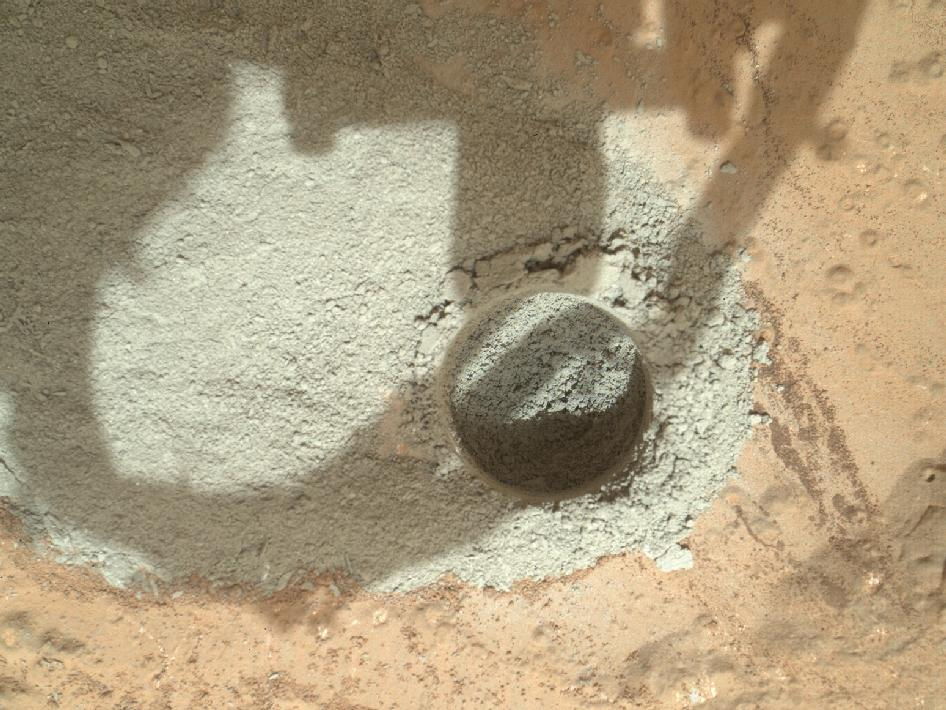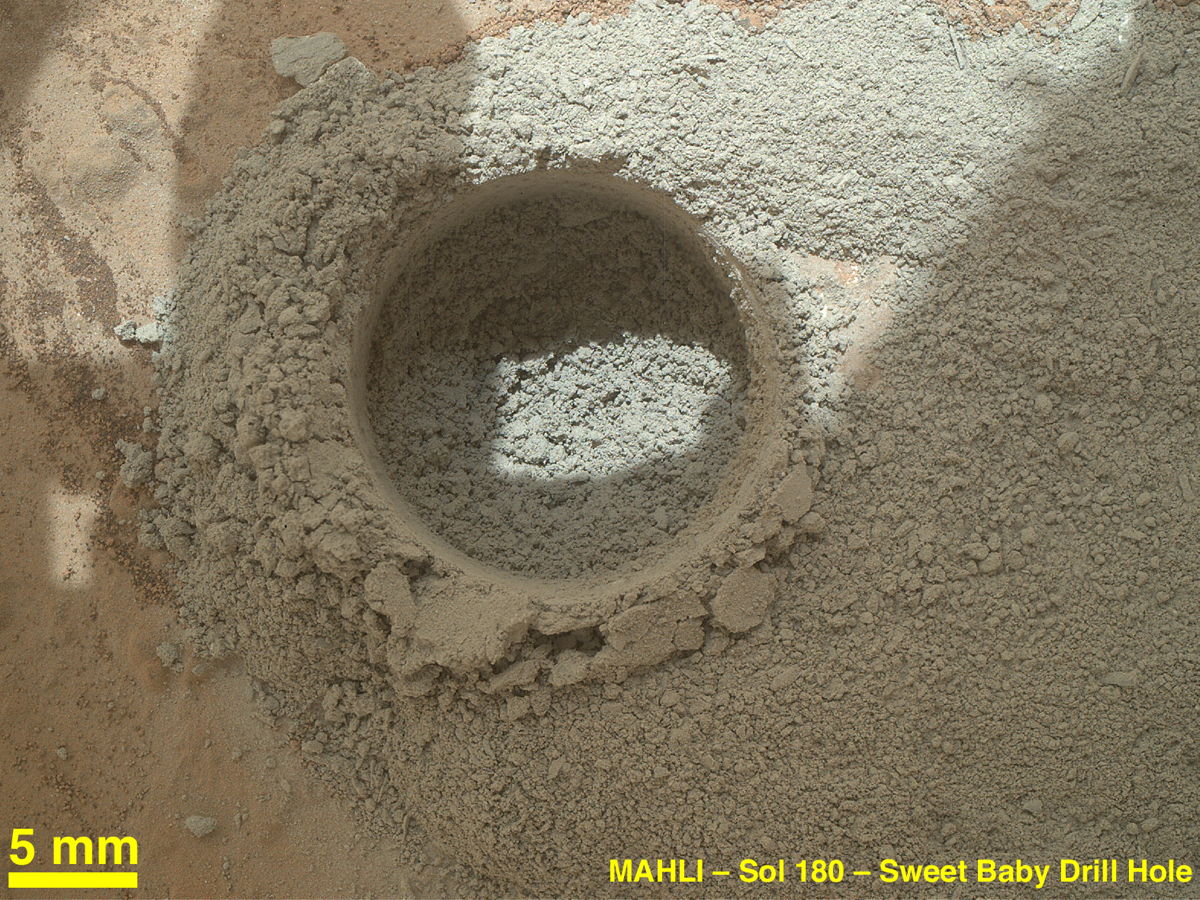Curiosity Rover Drills Into Mars for 1st Time

NASA's Mars rover Curiosity has drilled into the Red Planet for the first time in a major test of the 1-ton robot's ability to dig into the Martian surface and collect samples.
The Curiosity rover used the drill at the tip of its robotic arm to excavate a small hole 0.8 inches (2 centimeters) deep into a Martian rock called "John Klein," mission scientists announced today (Feb. 7). The so-called "mini-drill test" marked the first time Curiosity used both the hammer and rotating action of its Mars drill.
The rover pulverized the rock at its drill site, creating what appeared to be fine particles that could be used in sample-collection tests. Photos of Curiosity's first drill site on Mars revealed a small, perfectly round hole surrounded by the drill cuttings.
"If the drill cuttings on the ground around the fresh hole pass visual evaluation as suitable for processing by the rover's sample handling mechanisms, the rover team plans to proceed with commanding the first full drilling in coming days," mission managers said in a statement. [Curiosity Rover's Amazing Mars Photos]

Curiosity's science team received confirmation of the drill test on Wednesday (Feb. 6) at NASA's Jet Propulsion Laboratory (JPL) in Pasadena, Calif., which is home to the rover's mission control center. An earlier test performed over the past weekend used only the hammering, percussive action of Curiosity's drill.
Mission scientists picked the John Klein rock for Curiosity's drilling tests because it appeared to hold clues into the region's watery past.
"Pre-drilling observations of this rock yielded indications of one or more episodes of wet environmental conditions," mission managers explained. "The team plans to use Curiosity's laboratory instruments to analyze sample powder from inside the rock to learn more about the site's environmental history."
Get the Space.com Newsletter
Breaking space news, the latest updates on rocket launches, skywatching events and more!
Curiosity's drill is one of the many tools the rover is using to photograph and analyze the surface of Mars like never before. The car-size robot landed in the vast Gale Crater on Mars on Aug. 5 to begin a two-year prime mission that aims to determine if the region could have ever supported primitive microbial life.
Since landing, Curiosity has already discovered evidence that the area once contained a flowing stream of water in the ancient past.
The ultimate destination of the $2.5 billion Mars rover Curiosity is the base of Mount Sharp, a 3-mile (5 kilometers) peak that rises from the center of Gale Crater. Mission scientists ultimately plan to send Curiosity partway up the Martian mountain in order to better study the geology of the huge crater.
You can follow SPACE.com Managing Editor Tariq Malik on Twitter @tariqjmalik. Follow SPACE.com on Twitter @Spacedotcom. We're also on Facebook and Google+.

Join our Space Forums to keep talking space on the latest missions, night sky and more! And if you have a news tip, correction or comment, let us know at: community@space.com.

Tariq is the Editor-in-Chief of Space.com and joined the team in 2001, first as an intern and staff writer, and later as an editor. He covers human spaceflight, exploration and space science, as well as skywatching and entertainment. He became Space.com's Managing Editor in 2009 and Editor-in-Chief in 2019. Before joining Space.com, Tariq was a staff reporter for The Los Angeles Times covering education and city beats in La Habra, Fullerton and Huntington Beach. In October 2022, Tariq received the Harry Kolcum Award for excellence in space reporting from the National Space Club Florida Committee. He is also an Eagle Scout (yes, he has the Space Exploration merit badge) and went to Space Camp four times as a kid and a fifth time as an adult. He has journalism degrees from the University of Southern California and New York University. You can find Tariq at Space.com and as the co-host to the This Week In Space podcast with space historian Rod Pyle on the TWiT network. To see his latest project, you can follow Tariq on Twitter @tariqjmalik.









